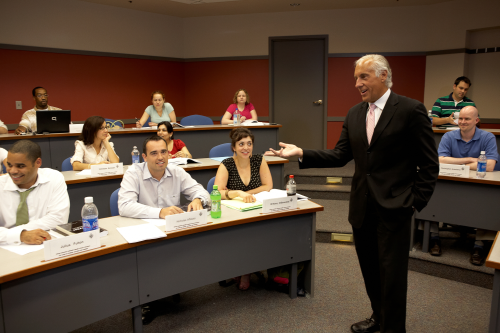Oct 06, 2009
DePaul University Achieves Record-Breaking Enrollment Over 25,000, Despite The Recession
DePaul University Achieves Record-Breaking Enrollment Over 25,000, Despite The Recession
Despite the troubled economy, DePaul University set an all-time record for enrollment this fall, surpassing 25,000 for the first time while welcoming its most diverse freshman class ever.
Total enrollment increased nearly 3 percent to 25,072 this year. The strongest gains occurred in graduate programs and among transfer students. Graduate enrollment rose about 3.5 percent to 7,795, while undergraduate enrollment was 2.5 percent higher, reaching 16,199. The university’s transfer enrollment increased 6.5 percent since last year and set an all-time record at 1,655 students. The College of Law’s enrollment increased 3 percent to 1,078.
The freshman class of 2,531 was smaller than last year’s class by 23 students, but more diverse than any previous class. It also maintained a strong academic profile, with an average ACT composite score of 24.5. A quarter of this year’s freshman class is African-American or Hispanic/Latino, compared with 18 percent of the class last year, and 55.8 percent of the class is white, and the remaining 17 percent is either Asian, Native American, multiracial or opted not to identify their backgrounds.
"DePaul has achieved remarkable enrollment successes this fall despite concerns about the economy that created a heightened level of uncertainty for most of the recruitment and enrollment cycle for universities nationally," said David Kalsbeek, senior vice president for enrollment management and marketing. "Our enrollment is up because of strategic decisions the university made to increase transfer and graduate students, and our freshman class reached our goals for both diversity and academic quality."
To attract more graduate students this year, DePaul increased recruitment and staffing and stream-lined the admission process. For transfer students, the university expanded admission counseling and formed more articulation agreements with area community colleges to ensure a smooth transfer of college credits, Kalsbeek said. He attributed the increase in underrepresented minorities to enhanced outreach and recruitment efforts and the launch of the First-Year Academic Success Program, which offers prerequisite math and writing summer courses at no cost to incoming students. The program is designed to help academically underprepared students for college-level coursework, particularly math. More than 200 students participated in the program over the summer.
While it did not diminish student interest in DePaul, the economy shaped this year’s enrollment in a number of ways, most noticeably in requests for financial aid. Eighty-five percent of the freshman class filed for financial assistance this fall, compared with 75 percent last year. "We also saw a higher number of freshmen and their families file appeals after receiving their financial aid packages, saying that their circumstances had changed," Kalsbeek said. "As a result, our commitment to institutional need-based grants has increased considerably.
"In addition, we saw an increase in currently enrolled students experiencing unanticipated financial difficulties in affording their tuition," Kalsbeek said. "Nevertheless, our freshman-to-sophomore-year retention rate is an all-time high of 85 percent, contributing to the overall record undergraduate enrollment this fall."
The recession also played a role in boosting graduate enrollments because of the counter-cyclical relationship between these enrollments and the economy. "A master’s degree can buffer people from downsizing in the workplace, or allow for a change in career," Kalsbeek observed.
Fewer out-of-state students applied for either freshman or transfer admission, which Kalsbeek believes is symptomatic of the economy. "Students are staying closer to home because of the economic uncertainties, but that’s also an advantage for DePaul because we are in a large, urban center. We became an attractive alternative for Chicago-area students who had been considering or going to schools out of state."
Among DePaul’s nine schools and colleges, the newest one—the College of Communication—showed the largest percentage increase in total enrollment, attracting 11.5 percent more students this fall compared to last year and reaching an enrollment of 1,591. Next was the School of Education, which boosted its enrollment by about 9.6 percent to 2,351 students this fall. In terms of headcount, DePaul’s College of Liberal Arts & Sciences increased the most, with 333 more students, a 4.62 percent increase over last year.

Despite the poor economy, DePaul University set an all-time record for enrollment this fall. The freshman class also set a record for diversity and maintained its strong academic profile.
